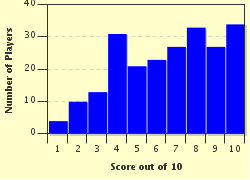Quiz Answer Key and Fun Facts
1. This Welsh castle began as a wooden motte-and-bailey affair in the 11th Century and this was replaced between 1293 and 1330 with the stone structure (pictured) that we see today. It was the birthplace of the future King Edward II, who was the first English heir apparent to be named Prince of Wales, a tradition that continues today. Where are we?
2. Moving east into England now, the ruins of the 11th-Century Corfe Castle are on the Isle of Purbeck in which English county?
3. We head south into France now. Founded in the 9th Century and expanded to its current size in the 13th Century, at which castle in the Maine-et-Loire department could you see the 14th-Century masterpiece the Apocalypse Tapestry?
4. We head south into Switzerland now, to the pictured château on the shores of Lake Geneva that became the home to the Count of Savoy in the 12th Century. Lord Byron made it famous with an 1816 poem about a 16th-Century monk who was imprisoned here. Where are we?
5. We now travel east into Germany, to one of the world's most famous castles. Commissioned by King Ludwig II of Bavaria, it was one of the inspirations for the "Sleeping Beauty Castle" at Disneyland. Where are we?
6. Continuing eastwards across Europe, we reach a castle that is more than 1,000 years old and is today the official residence of a nation's President. It is also the home of the National Gallery and the Crown Jewels, and an annual "Summer Shakespeare Festival" is held in the castle grounds. In which national capital are we?
7. The three towers of Rumelihisarı (pictured), which is also known as Rumelian Castle, would be an imposing welcome to anyone arriving at this city by sea. Built in the 1450s to control passing sea traffic, it is now a museum and a venue for open-air concerts and festivals. Which city are we now visiting?
8. Moving east across Asia, we arrive at Chittorgarh Fort. Built in the 7th Century, it has an area in excess of 700 acres and is the largest fort in which former British colony?
9. The resistance to the British expedition of the early 1900s led to the town of Gyantse and its fortress, built high on the cliffs above the town in the late 1300s, to be known as "Hero City". Where in Asia can you visit this castle?
10. Dating to 1440, this castle in the Aichi Prefecture of Japan claims to be the country's oldest surviving castle. Unique in Japan in that it was privately owned, it was seized by the Japanese government in the late 1800s and is now designated as a 'national treasure'. Where are we finishing this first leg of our world tour of castles?
Source: Author
EnglishJedi
This quiz was reviewed by FunTrivia editor
stedman before going online.
Any errors found in FunTrivia content are routinely corrected through our feedback system.

